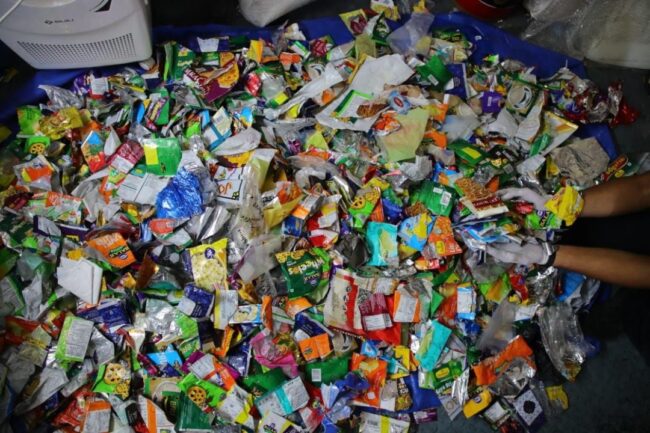Recycling plastic is a critical component of global efforts to reduce environmental waste. However, not all plastics are created equal when it comes to ease of recycling. Among the most problematic are multi-layered plastics (MLPs). These materials are commonly found in packaging, such as chip bags, food wrappers, and beverage cartons, due to their ability to preserve freshness and block moisture. But while they serve a valuable purpose in packaging, multi-layered plastics pose significant challenges for recycling systems. This article explores the hurdles associated with recycling multi-layered plastics and why finding solutions is essential for sustainable waste management.
What are Multi-layered Plastics?
Multi-layered plastics are made up of multiple layers of different materials, including various types of plastics and sometimes even non-plastic materials like aluminum or paper. Each layer has a specific function, whether it’s providing strength, flexibility, or acting as a barrier to oxygen and moisture. The combination of these materials creates a product that is lightweight, durable, and efficient at protecting goods during transportation and storage. However, the very design that makes multi-layered plastics so useful also complicates their recyclability.

Why are Multi-layered Plastics Difficult to Recycle?
- Incompatibility of Materials
The primary challenge in recycling MLPs lies in the fact that they are made from different types of plastics, each with its own recycling process. For example, a wrapper may contain polyethylene (PE) and polyethylene terephthalate (PET), two plastics that require distinct recycling methods. Separating these layers requires specialized technology, which is not always available in conventional recycling facilities. Additionally, the presence of non-plastic materials like aluminum adds another layer of complexity, making mechanical separation even more difficult.
- Cost of Separation Technology
Advanced technologies such as delamination are needed to separate the individual layers of MLPs. However, these processes are costly and not widely implemented in most recycling facilities. The cost-to-benefit ratio is a significant barrier, as the investment in this technology may not be justified by the relatively small volume of MLPs in the waste stream compared to single-material plastics.
- Low Market Value of Recycled MLPs
Even when multi-layered plastics are successfully separated and recycled, the end products often have lower market value compared to recycled single-layer plastics like PET or HDPE. The quality of the recycled material may be inferior due to the complex blend of resins, reducing its appeal to manufacturers. This makes the economic viability of recycling MLPs less attractive, further discouraging investment in recycling infrastructure for these materials.
- Contamination Issues
Contamination from food residues is a common issue with multi-layered packaging, particularly in food-related products like snack bags or sauce packets. This contamination can hinder the recycling process, as cleaning and sorting contaminated plastics is labor-intensive and costly. Many recycling facilities are not equipped to handle heavily contaminated materials, which often results in MLPs being sent to landfills instead of being recycled.
Current Solutions and Innovations
While recycling multi-layered plastics remains a challenge, several innovations and strategies are being explored to improve their recyclability:
- Chemical Recycling
Unlike traditional mechanical recycling, which relies on shredding and melting plastic, chemical recycling breaks down plastics into their molecular components. This process can be particularly effective for multi-layered plastics because it does not require separating the layers. The resulting raw materials can then be used to create new plastics, closing the loop in a circular economy. However, chemical recycling is still in its early stages and requires significant energy input, which raises concerns about its environmental impact. - Mono-material Alternatives
One approach to tackling the MLP problem is to replace multi-layered materials with mono-material alternatives. Packaging made from a single type of plastic is much easier to recycle and can still offer many of the same protective properties as MLPs. Companies are investing in research to develop high-barrier mono-material films that could eventually replace traditional multi-layered packaging in certain applications. - Extended Producer Responsibility (EPR) Programs
Governments and industries are increasingly adopting Extended Producer Responsibility (EPR) policies that hold manufacturers accountable for the end-of-life management of their products. Under EPR schemes, companies that produce multi-layered plastics may be required to fund recycling efforts or redesign their packaging to be more easily recyclable. These programs encourage manufacturers to consider the environmental impact of their packaging choices from the outset. - Improved Sorting and Recycling Infrastructure
Investing in better sorting technologies, such as near-infrared (NIR) spectroscopy, can help identify and separate different types of plastics more effectively. Additionally, upgrading recycling infrastructure to accommodate the specific needs of MLPs can improve overall recycling rates. This requires collaboration between governments, recycling companies, and manufacturers to create a system that can handle complex materials.
The Way Forward
Industry gatherings, such as the Plastics Conference, have become crucial platforms for discussing these issues and sharing innovative ideas to address the challenges of recycling multi-layered plastics. Bringing together experts from various fields, these conferences help drive new technologies, promote sustainable packaging alternatives, and encourage collaboration in the pursuit of better recycling practices.
The challenges in recycling multi-layered plastics are undeniable, but they are not insurmountable. As awareness of plastic waste grows, so too does the demand for more sustainable packaging solutions. While improving recycling infrastructure and developing new technologies will take time and investment, the potential benefits are significant. Reducing the environmental impact of plastic waste is not only crucial for the health of the planet but also aligns with growing consumer demand for eco-friendly products.
In the meantime, reducing the use of multi-layered plastics and opting for recyclable alternatives wherever possible can help minimize waste. Companies and consumers alike have a role to play in driving innovation and supporting efforts to make plastic recycling more efficient and widespread.
COMMENTS